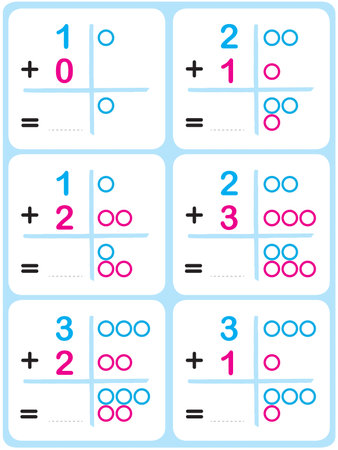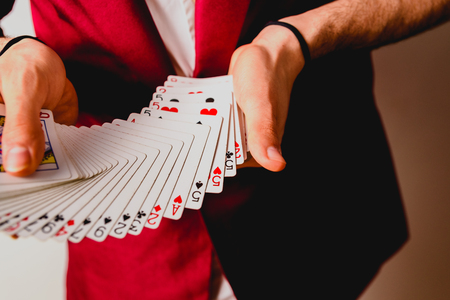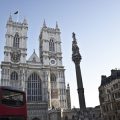Origins in Renaissance Italy
In the candlelit chambers of 15th-century Italy, where art and intellect mingled with the scent of spiced wine, Tarot first made its enigmatic appearance. Far removed from the mystical reputation it would later acquire, Tarot began as a parlour game—Tarocchi—played by the Italian nobility. Imagine silk-clad courtiers gathered around ornate tables, laughter echoing through grand halls adorned with frescoes and gilded mirrors. It was within this vibrant tapestry of creativity and culture that Tarot cards became more than mere amusements; they blossomed into miniature masterpieces, each hand-painted card a fusion of symbolism and storytelling.
The original decks, often commissioned by influential families like the Visconti and Sforza, were lavishly illustrated, reflecting not only the wealth but also the intellectual curiosity of Renaissance Italy. The allegorical figures—The Fool, The Magician, The High Priestess—served as both entertainment and reflection, inviting players to ponder deeper meanings behind the images. In these gatherings, the Tarot’s mysterious allure began to take root, entwining itself with Italian art and philosophy. What started as a simple game was already sowing seeds of intrigue that would ripple across centuries and continents, setting the stage for Tarot’s transformation from aristocratic pastime to a vessel of spiritual insight.
Tarot’s Journey North: Arrival in France and Adaptation
As the wheel of time turned through the late fifteenth century, the Tarot, cradled by Italian nobility, began its northward migration across the snow-capped Alps into France. This transition marked a profound transformation in both form and meaning. The French aristocracy embraced Tarot not merely as a card game but as a vessel for deeper symbolism—a mirror reflecting the soul’s journey. Within elegant salons of Paris and Marseille, Tarot’s ornate imagery began to stir the collective imagination, inviting questions about fate, fortune, and the mysteries hidden within each shuffle.
The French adaptation of Tarot introduced subtle yet significant changes. The suits evolved, with Swords, Cups, Coins, and Batons gradually morphing into Spades, Hearts, Diamonds, and Clubs—echoes still found in modern playing cards. More importantly, French mystics and philosophers started to see beyond the painted faces; they delved into allegory and archetype, weaving spiritual wisdom into every card. The Tarot of Marseille emerged as an iconic deck during this period, its enigmatic images evoking both awe and curiosity among those who sought more than mere amusement.
| Aspect | Italian Tarot | French Tarot (Marseille) |
|---|---|---|
| Main Purpose | Courtly entertainment | Mystical exploration & divination |
| Deck Structure | Traditional suits & trumps | Simplified suits & stylised trumps |
| Cultural Significance | Status symbol & pastime | Tool for introspection & guidance |
| Symbolic Depth | Largely decorative | Rich in allegory & spiritual meaning |
This shift in perception—from entertainment to esoteric tool—transformed how Tarot was understood throughout France. No longer were these cards just a pastime for the elite; they became portals through which seekers could peer into hidden realms of consciousness. The seeds planted in French soil would eventually sprout new branches of mysticism that would take root across Europe—and especially in Britain—where Tarot would continue its sacred dance between fate and free will.

3. Victorian Britain and the Esoteric Revival
Step into the misty streets of Victorian Britain, where gaslights flicker and curiosity about the unseen world dances in parlours and drawing rooms. It was an age when science and faith collided, yet beneath the surface, a spiritual hunger grew ever stronger. This was the fertile ground upon which Tarot took root and blossomed anew, not as a mere card game but as a mystical key to hidden realms.
The late nineteenth century saw a remarkable surge in interest toward the occult—an era known as the Esoteric Revival. Learned societies began to form, peopled by scholars, poets, and visionaries who sought wisdom beyond the material world. Among these groups, none proved so influential as the Hermetic Order of the Golden Dawn.
The Golden Dawn’s Mystical Vision
The Golden Dawn, founded in London in 1887, wove together threads from ancient Egyptian lore, Kabbalah, astrology, and alchemy. For its members—who included luminaries like W.B. Yeats and Arthur Edward Waite—the Tarot became far more than painted cards; it was reimagined as a map for spiritual transformation and self-discovery. Each card was laden with layers of symbolism designed to unlock intuition and provide guidance from realms beyond ordinary sight.
From Parlour Game to Spiritual Tool
No longer confined to fortune-telling at fairs or after-dinner amusements, Tarot now entered the sanctum of esoteric study. In candlelit chambers across Britain, seekers shuffled their decks with reverence, using spreads not just for divination but as portals into meditation and ritual practice. The art and interpretation of Tarot shifted: suits became elements, court cards reflected archetypal powers, and the journey of the Fool mirrored one’s own quest for enlightenment.
A Legacy That Endures
This transformation set the stage for Tarot’s enduring role in British spirituality. The Victorian fascination with mysticism breathed new life into ancient symbols, inviting generations to come to explore Tarot’s mysteries with both intellect and intuition—a uniquely British blend of rational inquiry and poetic imagination.
4. Waite, Smith, and the British Tarot Renaissance
If you’ve ever shuffled a Tarot deck in Britain, it’s likely you were touching the legacy of Arthur Edward Waite and Pamela Colman Smith. Their collaboration in 1909 gave birth to the Rider-Waite-Smith (RWS) deck—a creation that would become the cornerstone of modern British Tarot practice and ignite a renaissance of esoteric exploration across the UK. But who were these visionaries, and how did their work reshape Tarot for generations?
Unearthing the Story: A Meeting of Minds and Spirit
Waite, an English scholar steeped in mysticism, yearned for a deck rich in intuitive symbolism rather than mere fortune-telling. Enter Pamela Colman Smith—an artist with a flair for channelling archetypes into vivid images. Guided by Waite’s detailed instructions but fuelled by her own spiritual insight, Smith painted 78 cards that spoke not just to the mind but to the soul.
The RWS Deck: A Table of Transformations
| Aspect | Before RWS Deck | After RWS Deck |
|---|---|---|
| Imagery on Minor Arcana | Simple pips (e.g., four cups shown as four actual cups) | Scenic illustrations weaving stories and emotions into each card |
| Symbolism | Limited, mostly reserved for Major Arcana | Rich symbolism throughout all 78 cards, inviting intuitive reading |
| Cultural Impact in Britain | Tarot viewed as obscure or foreign pastime | Became a tool for self-discovery and creative exploration, embraced by artists, writers, and seekers across Britain |
A New Generation Awakens
The resonance of the RWS deck was felt immediately within Britain’s spiritual circles. Its imagery offered not just answers, but questions—opening doors to inner worlds through dreamlike scenes and potent symbols. This new approach made Tarot more accessible; suddenly, anyone could pick up a deck and tap into their intuition, regardless of background or training. The British Tarot renaissance had begun: from smoky parlours in Soho to quiet corners in Yorkshire cottages, the cards became companions for reflection and revelation.
5. Tarot in Contemporary British Life
Today, Tarot is no longer a mysterious practice reserved for clandestine parlours or eccentric aristocrats. Instead, it has gracefully woven itself into the vibrant spiritual tapestry of modern Britain. Walk down any bustling high street from Brighton to Edinburgh, and you may spot independent bookshops and boutique crystal stores proudly displaying decks of Tarot cards alongside their incense and healing stones. Here, Tarot is not only a nod to ancient mystique but also a symbol of self-discovery and personal empowerment.
Across the UK, mystical gatherings are becoming more commonplace—from intimate circles in cosy London flats to lively festivals in the rolling hills of Glastonbury. Here, seekers come together, guided by intuition and curiosity, to explore the cards not merely as fortune-telling tools but as mirrors reflecting their inner worlds. The British approach to Tarot has evolved: it’s less about predicting what tomorrow holds and more about understanding who we are today.
Tarot Beyond Divination
The language surrounding Tarot in Britain has softened and expanded. Instead of seeing the cards as omens or portents, many now regard them as companions on a journey of introspection. Workshops led by seasoned readers often focus on mindfulness, encouraging participants to draw cards for daily guidance or meditation rather than seeking concrete answers about love or money.
From High Street to Home
This shift is reflected in British popular culture as well. Tarot imagery appears in art galleries and fashion collections, while best-selling authors weave card symbolism into their novels and poetry. Social media platforms brim with UK-based Tarot enthusiasts sharing card spreads over cups of tea or discussing archetypes under rainy Manchester skies. Even therapists have begun to embrace Tarot as a gentle prompt for conversation and self-reflection with clients.
A Tool for Inner Reflection
Ultimately, Tarot’s journey across centuries has led it from Italian courts through Victorian parlours to the heart of contemporary British life—not just as a relic of esoteric tradition but as an accessible tool for spiritual growth. In modern Britain, Tarot invites us all to pause, shuffle the deck, and listen deeply to the whispers of our own souls—reminding us that within every card lies a story waiting to be discovered.
6. British Flavour: Unique Interpretations and Practices
The Tarot has found a distinct voice within the British Isles, weaving itself into the fabric of local culture in ways both subtle and profound. While its roots may trace back to Renaissance Italy, in Britain, Tarot has blossomed with a unique vernacular—one that is deeply intertwined with folklore, community gatherings, and the nuanced landscape of British storytelling.
Echoes of Folklore
In Britain, Tarot readings are often seasoned with references to ancient myths, Celtic legends, and the mysterious spirits said to roam the moors and woodlands. Cards like The Hermit or The Moon might be interpreted through the lens of Arthurian lore or tales of fae folk, adding layers of meaning that resonate with generations steeped in storytelling. Readers frequently draw upon these rich traditions, allowing old beliefs to dance with modern intuition.
Community Spirit and Gathering
Tarot’s journey here is not a solitary one. Across cities and villages alike, Tarot circles and workshops foster a sense of togetherness. Whether in cosy tearooms or historic halls, seekers gather for collective readings where each interpretation is coloured by shared experience and local dialect. These gatherings are less about prediction and more about connection—a gentle reminder that insight flourishes best when rooted in community soil.
The Vernacular of Everyday Life
Perhaps what truly sets British Tarot apart is its embrace of everyday language. Gone are grand pronouncements; instead, readers favour colloquial expressions—turning a “Tower moment” into “having a proper wobble,” or seeing The Fool as “setting off on a right adventure.” This down-to-earth approach ensures that Tarot remains accessible, comforting, and inherently British in character.
A Living Tradition
Today, Tarot in Britain is less an oracle set apart and more a living tradition—one that evolves alongside the communities it serves. It draws from local history, echoes village customs, and reflects the ever-shifting tides of collective spirit. In this way, Tarot continues its journey—not only as an imported art but as an indelible part of Britain’s own spiritual story.


